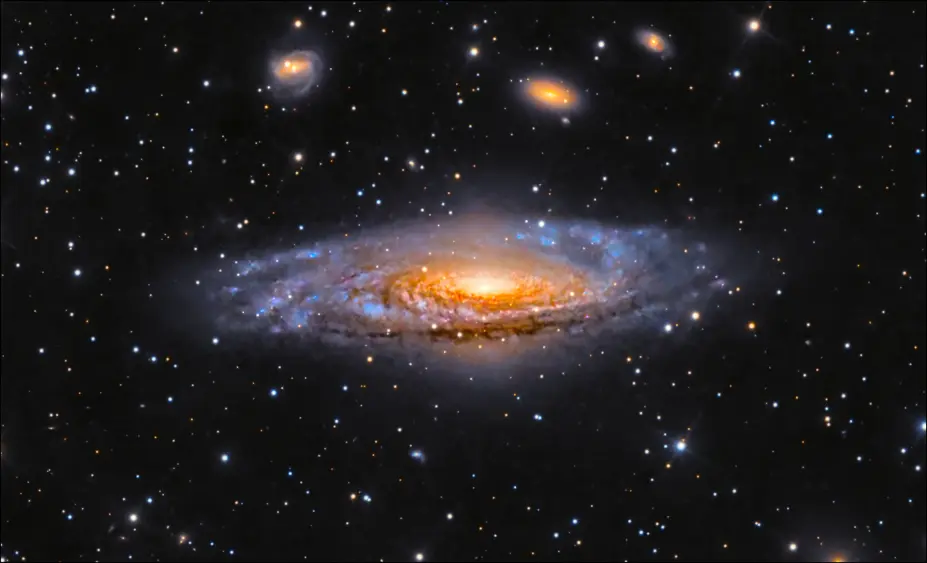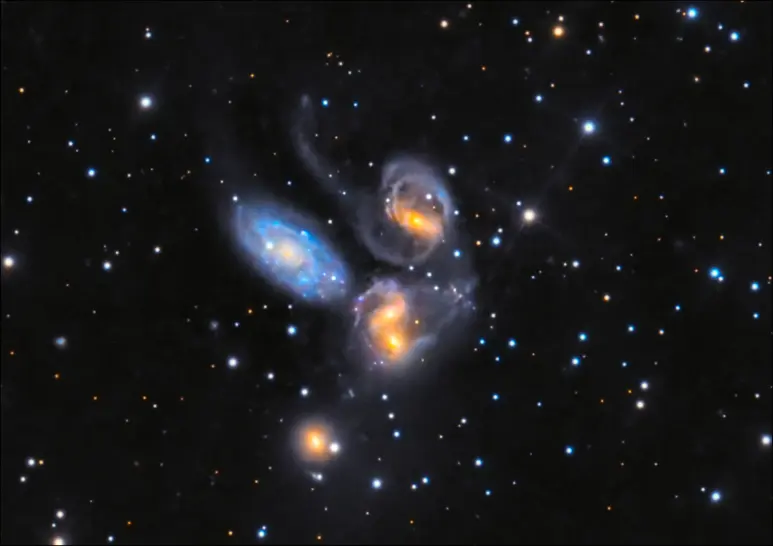It’s been a while
… since my last published photo. Life has kept me busy, but I finally got around to take a new photo!
This is a target I have imaged before, but never quite with this depth and detail before. Last time I imaged this target was in 2017!
NGC 7331

The big spiral galaxy in the top right corner of the photo has the name NGC 7331. It is located roughly 50 Million Light years from earth. Due to its apparent similarity to our own Milky Way galaxy NGC 7331 used to be referred to as “Milky Way’s Twin”. After recent discoveries it is now understood that our Milky Way has a barred structure in the galaxy core while NGC 7331 does not.
Note the surrounding, smaller galaxies around NGC7331. While these appear rather be close to NGC7331, they are actually much further away (between 290 and 350 million Light years).
Stephan’s Quintet

This group of 4 interacting galaxies are distanced around 210 - 340 million light years away from earth. These 4 galaxies have been the target of many studies regarding interacting galaxies due to the “top down” view on the interactions. NASA’s Spitzer Telescope unexpectedly detected a very powerful hydrogen stream in the shockwave between two of the galaxies. It was previously thought that hydrogen atoms could not survive in the turbulent environment of such colliding galaxies. It is theorized that these are actually able to survive since the strong shockwave is broken down into many smaller shockwaves, allowing the hydrogen to survive.
